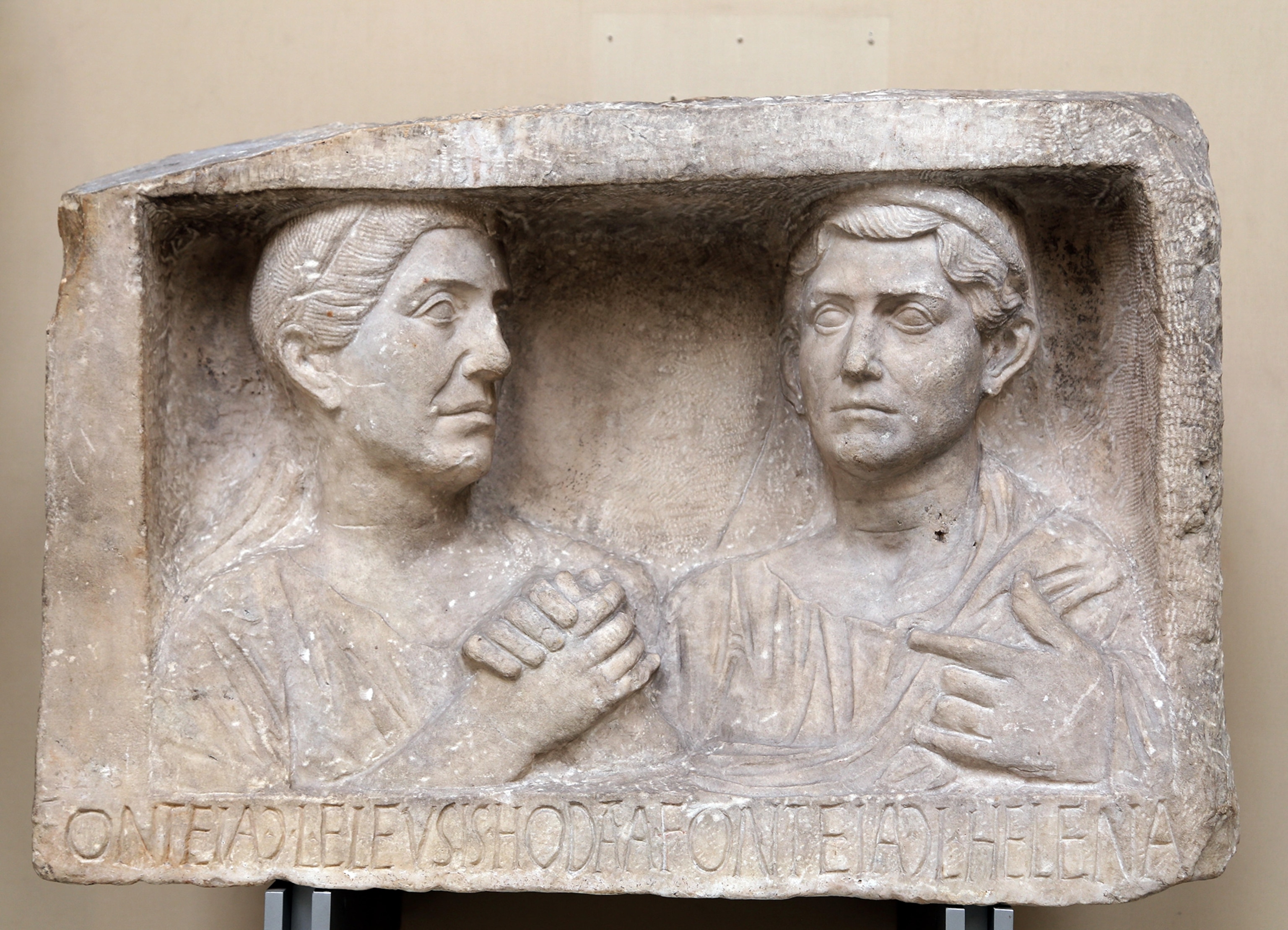Did the ancient Romans really abandon people with disabilities?
New archaeological evidence is helping rewrite old myths about disabled people in the ancient world.

There is a popular perception that the ancient Greeks and Romans were so focused on strength and power that they abandoned disabled infants and community members to die. According to the first-century CE philosopher and biographer Plutarch, the Spartans would bring their newborns to a council of elders for assessment. Those babies who were deemed to be “lowborn or deformed” were left outside to die.
For nearly two millennia since, there has been a pervasive sense that people in antiquity were more brutal in their attitudes toward people with disabilities. As Martina Gatto, a research fellow at the University of Rome, has argued, the consequences of this myth were serious: later societies justified the practice of eugenics and the extermination of disabled people on the basis that the ancient Greeks did the same. In a 1929 speech, for example, Hitler praised Spartan eugenics and their policy of selective infanticide, lauding Sparta as “the purest racial State in history.” As California State University, Long Beach classicist Debby Sneed told Science in 2021, the idea has “gotten used for some pretty nefarious ends.”
However, a growing body of archaeological evidence reveals that the historical reality may have been different than the myth. From skeletons in a Roman city that show how citizens helped people with disabilities flee an earthquake, to tender burials of disabled infants, a new and more complex narrative is emerging.
(How the wheelchair opened up the world to millions of people)
Helping out during a disaster
A recently published report of excavations pertaining to earthquake casualties from the Roman city Heraclea Sintica in southwest Bulgaria suggests that, rather than abandoning differently abled people in times of crisis, community members actively worked to rescue those who would have been prevented from navigating perilous situations alone. The study, published in the Journal of Archaeological Science and authored by Bulgarian scientists Viktoria Russeva and Lyuba Manoilova, examines the remains of six individuals trapped in cisterns during an earthquake in the fourth century CE.
The find is interesting, because it is the first discovery of earthquake victims at the site. Anthropological analysis of the human remains, some of which were only partially intact, revealed that some of the deceased individuals had a congenital malformation. Using the methods of osteobiographic reconstruction pioneered by Saul and Saul and developed by others like Lauren Hosek and John Robb, the authors of the study determined that all the individuals (with one possible exception where the skeleton was badly damaged) “were likely of the male sex.” Two of the individuals were younger (18–20), while the remainder were older, between 25 and 35 years old at the time of death.
(This carpenter builds crutches for kids. Now it's his turn to walk.)
Anthropological examination revealed that one of the younger individuals (2N) “suffered from a serious condition.” One of the other individuals trapped in the cistern seemed to have had a cleft palate. The remains of individual 2N revealed “a variety of pathological features” that were severe on their own but, when found in conjunction, are suggestive of the rare genetic disorder Apert syndrome. Apert syndrome causes the joints in the skull to close early, leading to atypical bone formation in the face, feet, and hands. These differences would have been apparent from birth and may have led to difficulties with feeding, breathing, possible hearing problems, speech impediments, and even blindness. It is unlikely, Russeva and Manoilova write, that this young man would have been able to work, and he may have been vulnerable to ridicule because of his bodily differences. “Applying modern designations, this individual would be considered a person with disabilities,” and would have been highly dependent upon others, they conclude.
The location of the six remains in the cistern suggested to the authors of the study that the small group was attempting to escape the earthquake when they died. “It is possible,” they write, “that one of the other earthquake victims found in the cistern was accompanying and trying to help the disabled person survive the disaster.” Though the study only considers a small sample of people, it challenges modern assumptions about the value of people with disabilities in the ancient world.
Caring for babies with bodily differences
What then of the ancient Greeks, who, according to Plutarch, would surely have dispensed with disabled infants like this? Here again, both the archeological and literary evidence suggests something different. In an article published in Hesperia in 2021, Debby Sneed argued that there is widespread evidence that “ancient Greek parents, midwives, and physicians often took active and extraordinary measures to assist and accommodate infants born with a variety of congenital and physical impairments.”
Sneed pointed to evidence from several excavations of infant remains that revealed that rather than being abandoned, disabled infants seem to have been cared for until they died of natural causes. In one instance of the burial of an infant with upper limb differences from the Agora Bone Well in Athens (second century BCE), this infant was treated no differently than the many other infants whose remains were buried there.
The site holds the remains of over 450 infants who died too young to receive a formal burial but were nonetheless cared for before their deaths. Liston, Rotroff, and Snyder, the archeologists who published the first full study of the remains, described the dimensions of the bones of this particular infant as “suggest[ing] a severe growth anomaly resulting in stunted limbs.” This anomaly would have been apparent at birth. A second disabled infant aged six to eight months at the time of their death was also deposited in the well. Listron, Rotroff, and Snyder observe that the child, who had hydrocephalus before they died, “was cared for during a period when it would have become progressively more debilitated...”
(Is travel about to get better for people with disabilities?)
Sneed points to these examples, the use of feeding bottles as accommodative devices for disabled infants, and numerous literary examples of disabled individuals surviving into adulthood as evidence that ancient Greeks did not typically abandon disabled children to death. While many infants died young and the ancient Greeks and Romans practiced infant exposure, abandonment was motivated by several complicated factors, many of which were economic. It is inaccurate, she argues, to suggest that infant exposure was primarily motivated by an infant’s appearance and perceived disability. At least one ancient Greek physician, Sneed writes, “valued individuals with congenital impairments like clubfoot and limb difference enough to dedicate professional thought and practice to their care and development.”
Care, not cruelty
What all of this suggests is that infanticide and abandonment were not the default attitude to disability and impairment in the ancient Greek and Roman world. Undoubtedly some infants were exposed at birth—as they were in other societies—and ancient philosophers prized their own idea of physical perfection highly. Some authors, like Plato and Aristotle, wrote of imaginary societies in which disability did not exist. But in practice and in the real world, disabled children were raised to adulthood.
The recent discovery in Bulgaria shows both that an infant who was visibly different at birth was supported by their family through adulthood, and that in moments of disaster some people in the Roman world continued to help their disabled family members and neighbors. Rather than abandoning a disabled relative whose impairments may have slowed them down, this group seem to have taken pains to include and protect him.








